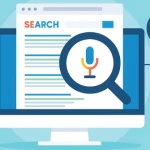Personalization in digital marketing refers to tailoring marketing messages, content, and experiences to individual users based on their preferences, behavior, and demographic information. Personalization aims to create more relevant and engaging interactions with users, leading to increased customer satisfaction, loyalty, and ultimately, higher conversion rates and sales.
Technology and data analytics advancements have enabled digital marketers to gather and analyze vast amounts of information about users, such as their browsing history, purchase behavior, social media activity, and more. With this data, marketers can create personalized experiences across various digital channels, including websites, emails, social media, mobile apps, and advertisements.
Here are some common methods and examples of personalization in digital marketing:
Personalized Email Marketing

Personalized email marketing is a strategy that involves tailoring email content and campaigns to individual recipients based on their preferences, behavior, and other relevant data. It goes beyond generic, one-size-fits-all email blasts and aims to deliver more relevant and engaging messages to each subscriber, ultimately increasing the effectiveness of email marketing efforts.
Here are some key components and best practices for implementing personalized email marketing:
Segmentation: Divide your email list into smaller segments based on specific criteria such as demographics, past purchase behavior, engagement level, geographic location, or interests. This allows you to send targeted messages to different groups of subscribers.
Personalized Subject Lines: Use the recipient’s name in the subject line to grab their attention and make the email feel more personalized. However, avoid overusing the recipient’s name, as it may come across as spammy.
Dynamic Content: Create emails with dynamic content that changes based on each recipient’s preferences or actions. This could include personalized product recommendations, content based on previous purchases or browsing behavior, or location-specific offers.
Behavioral Triggers: Set up automated email triggers based on user actions, such as abandoned cart emails, post-purchase follow-ups, or re-engagement emails for inactive subscribers.
Product Recommendations: Include personalized product recommendations in your emails based on the recipient’s browsing and purchase history. This can help increase cross-selling and upselling opportunities.
A/B Testing: Test different variations of personalized content, subject lines, and email designs to identify what resonates best with your audience and drives higher engagement.
Optimize Send Times: Analyze when your subscribers are most likely to open and engage with your emails. Schedule your email sends to align with these optimal times.
Use Dynamic Merge Tags: Incorporate dynamic merge tags to insert personalized information like the subscriber’s name, location, or purchase history directly into the email content.
Preference Centers: Provide a preference center where subscribers can update their preferences and interests. This helps ensure you’re sending them content that aligns with their current preferences.
Personalized Email Automation: Leverage marketing automation tools to send personalized email sequences based on specific triggers, such as a user signing up for a webinar or downloading a lead magnet.
Dynamic Website Content

Dynamic website content refers to website elements that change based on user behavior, preferences, or other real-time data. Unlike static websites with fixed content, dynamic websites offer personalized and interactive experiences to visitors, making the content more relevant and engaging.
Here are some common examples of dynamic website content:
Personalization: The website displays personalized content based on user data, such as their location, browsing history, past interactions, or preferences. This can include personalized product recommendations, tailored offers, or customized landing pages.
User Accounts: Websites with user account functionality can display personalized content to logged-in users, such as order history, account settings, or personalized dashboards.
E-commerce Product Recommendations: Online stores often use dynamic content to show related products, frequently bought together items, or personalized product suggestions based on the user’s browsing and purchase history.
News Feeds: Websites with news or blog sections can display dynamic content by showing the latest articles or blog posts on the homepage or category pages.
Social Media Feeds: Websites that integrate social media feeds can display real-time posts and updates from the user’s social media networks.
Countdown Timers: For limited-time promotions or events, websites can use dynamic countdown timers that update in real-time to create a sense of urgency.
Interactive Forms: Forms that change dynamically based on user inputs or selections, making the user experience more interactive and user-friendly.
Geo-Targeting: Websites can show location-specific content or offers based on the user’s IP address or geolocation data.
A/B Testing: Websites can perform A/B testing on different versions of certain elements, such as headlines, call-to-action buttons, or images, to determine which version performs better in terms of user engagement and conversions.
Real-time Updates: Websites with dynamic content can display real-time information, such as stock market data, live chat support, or sports scores.
Behavioral Retargeting
Behavioral retargeting, also known as behavioral remarketing or simply retargeting, is a digital marketing strategy that involves targeting and displaying ads to users based on their past online behavior and interactions with a website or app. It is a form of personalized advertising designed to re-engage potential customers who have shown interest in a product or service but have not completed a desired action, such as making a purchase or filling out a form.
Here’s how behavioral retargeting typically works:
User Visits a Website: When a user visits a website or interacts with an app, a tracking cookie is placed in their browser. This cookie allows the website to track the user’s actions and behavior during their visit.
User Leaves the Website: If the user leaves the website without completing the desired action (e.g., making a purchase), they may be considered a lost opportunity.
Retargeting Campaign Initiated: After leaving the website, the user will start seeing retargeted ads as they browse other websites or use social media platforms. These ads are specifically targeted to the user based on their past behavior on the original website.
Displaying Relevant Ads: The retargeted ads often feature products or content related to what the user viewed or interacted with on the original website. This personalized approach aims to remind the user about their initial interest and encourage them to return and complete the desired action.
Behavioral retargeting is an effective strategy for several reasons:
Re-Engagement: It helps bring back visitors who have shown interest in a product or service, increasing the chances of conversion.
Personalization: By showing relevant content or products, retargeting ads feel more personalized, which can lead to higher engagement rates.
Conversion Optimization: Retargeting can help increase conversion rates and reduce the likelihood of losing potential customers.
Brand Recall: The repeated exposure to retargeted ads reinforces brand awareness and keeps the brand fresh in the user’s mind.
Location-Based Personalization

Location-based personalization is a digital marketing strategy that involves tailoring content, offers, and experiences to users based on their geographical location. This approach leverages the user’s IP address, GPS data, or other location signals to deliver relevant and location-specific information. The goal is to create more targeted and engaging interactions that resonate with users in their local context.
Here are some common examples of location-based personalization in digital marketing:
Location-Specific Offers: Providing users with special discounts, promotions, or deals based on their current location. For example, a retail store might offer a discount to users who are near their physical store to encourage foot traffic.
Localized Content: Displaying content that is specific to the user’s location, such as mentioning local events, news, or references in the website or email content.
Geotargeted Ads: Delivering targeted advertisements to users based on their geographic location. Advertisers can adjust ad content, language, and offers based on the user’s city or region.
Store Locator and Maps: Incorporating store locators or maps on websites or mobile apps to help users find nearby physical locations.
Localized Landing Pages: Creating landing pages tailored to different geographic regions to provide location-specific information or offers.
Location-Based Notifications: Send push notifications or alerts to users when they are in proximity to a specific store or point of interest.
Weather-Based Personalization: Adapting content or product recommendations based on the user’s weather conditions, which can be particularly useful for industries like fashion or travel.
Local Events and Promotions: Highlight local events, workshops, or promotions that are relevant to users in their area.
Discover more from Wits Technologies Ltd
Subscribe to get the latest posts sent to your email.





